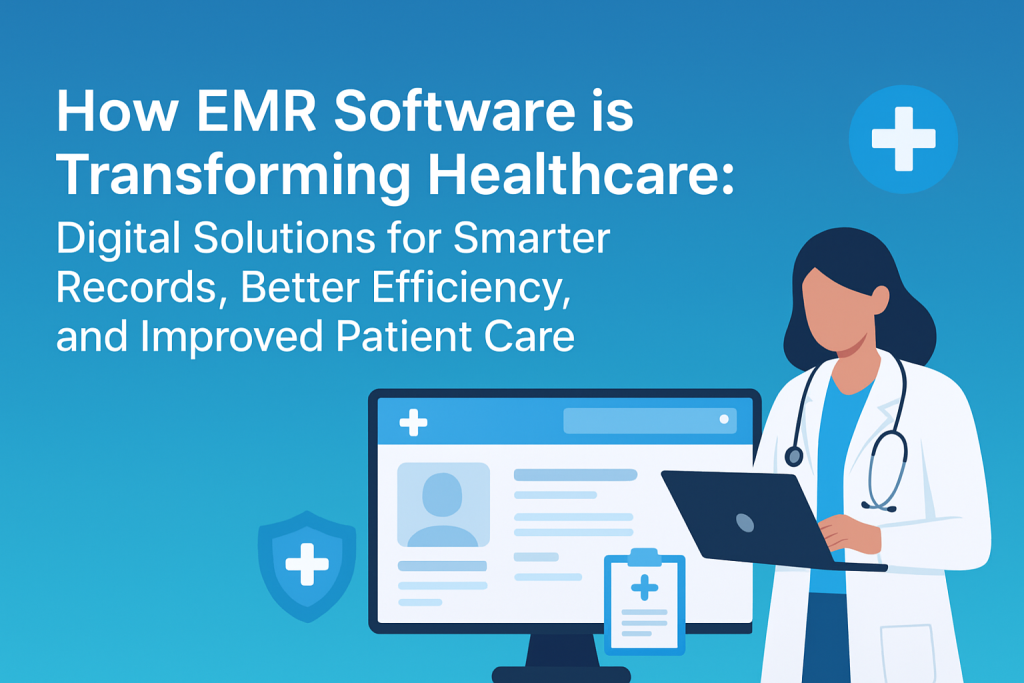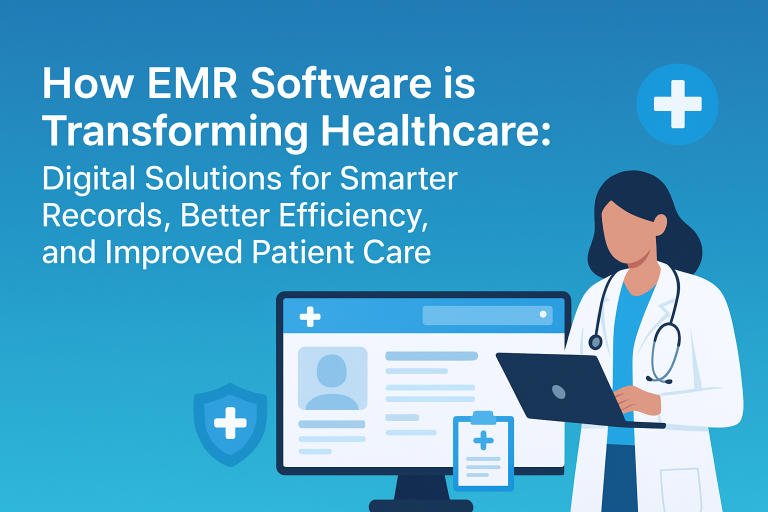In the ever-evolving world of healthcare, technology is reshaping how hospitals, clinics, and practitioners operate. Among the most important advancements, emr software has revolutionized the way patient information is stored, accessed, and shared. This powerful tool not only makes medical practices more efficient but also ensures better patient outcomes. Moreover, with healthcare becoming increasingly data-driven, the adoption of EMR Healthcare Software has become essential.
What is EMR Software?
To begin with, emr software stands for Electronic Medical Records software. It is designed to digitize patient records that were traditionally stored on paper. Consequently, doctors and staff no longer have to sift through endless files to retrieve vital information. Instead, everything is organized in a centralized system.
In addition, EMRs offer features such as diagnosis history, prescribed medications, treatment notes, and laboratory results. As a result, healthcare providers can deliver more personalized and precise care. Furthermore, the accuracy and accessibility of data reduce errors and streamline workflow.
The Difference Between EMR and EHR Software
It is important to distinguish between emr software and ehr software, as the terms are often used interchangeably. While both serve the purpose of digitizing patient records, there are some notable differences.
- EMR software focuses on patient records within a single clinic or hospital.
- EHR software, on the other hand, is more comprehensive. It allows sharing of records across multiple healthcare organizations.
Therefore, electronic health record systems are considered more advanced because they facilitate interoperability. For instance, if a patient changes doctors or moves to another city, their EHR can be accessed by the new provider. Consequently, continuity of care is maintained without duplication or data loss.
The Role of Electronic Health Record Systems
The healthcare industry generates massive amounts of data daily, and managing it manually is nearly impossible. This is where electronic health record systems come into play. These systems ensure that all patient information, from allergies to lab results, is available instantly. Moreover, the ability to integrate with diagnostic equipment and pharmacies further improves efficiency.
In addition, EHR systems enhance communication between specialists. For example, a cardiologist and a general physician can access the same patient’s record simultaneously. As a result, collaborative decision-making becomes easier. Furthermore, patients themselves benefit, as many EHR platforms offer portals where they can check prescriptions, test results, and upcoming appointments.
The Importance of Electronic Medical Record Service
While EMRs and EHRs are systems, the Electronic Medical Record Service refers to the complete solution of deploying, managing, and maintaining these platforms. This service ensures that healthcare providers not only adopt the software but also use it effectively.
For instance, small clinics may not have the technical expertise to set up an EMR on their own. However, with professional Electronic Medical Record Service, they can receive training, cloud hosting, and continuous support. Moreover, these services include customization, ensuring that the system aligns with the unique needs of each healthcare facility.
Consequently, this approach reduces downtime, enhances user satisfaction, and ensures compliance with healthcare regulations.

Benefits of EMR Software for Healthcare Providers
The adoption of emr software provides several key benefits that are reshaping healthcare delivery.
- Improved Efficiency
Doctors and nurses save time by accessing records instantly. Moreover, automated reminders for follow-up visits and vaccinations ensure patients receive timely care. - Reduced Errors
Manual record-keeping often leads to mistakes. However, EMR systems reduce errors by offering structured and legible digital data. - Data Security
EMRs are equipped with encryption and access controls. Consequently, patient confidentiality is protected, and compliance with legal standards is maintained. - Better Patient Engagement
With digital records, patients can actively participate in their healthcare. In addition, portals allow them to view their history, prescriptions, and upcoming appointments. - Integration with Labs and Pharmacies
As a result of seamless integration, lab reports and prescriptions are available in real time. Furthermore, doctors can make faster and more informed decisions.
Growing Adoption of EMR and EHR Software
Globally, the adoption of emr software and ehr software is accelerating. Hospitals and clinics are realizing that digital transformation is not optional but essential. Moreover, governments in many countries are supporting this transition by encouraging digital health records.
For instance, in India, initiatives such as the Ayushman Bharat Digital Mission are driving the adoption of electronic health record systems. Consequently, more hospitals are investing in EMR and EHR platforms. Furthermore, patients are also demanding digital convenience, which has further boosted adoption.
Challenges in Implementation
Despite the benefits, implementing EMRs and EHRs comes with challenges. High costs, lack of technical expertise, and resistance to change are common barriers. However, these challenges can be overcome.
- Cost Concerns: Smaller clinics may hesitate due to expenses. Nevertheless, cloud-based Electronic Medical Record Service options make adoption affordable.
- Training Issues: Staff may initially find it difficult to adapt. However, with proper training, the transition becomes smooth.
- Data Privacy: Cybersecurity remains a concern. Therefore, hospitals must choose trusted vendors with strong security protocols.
Consequently, addressing these barriers is vital for widespread adoption.
The Future of EMR and EHR Systems
The future of healthcare lies in smart, connected systems, and emr software will continue to evolve. Moreover, with the integration of Artificial Intelligence (AI) and Machine Learning (ML), EMRs are becoming predictive rather than reactive. For instance, AI can analyze historical data to predict disease risks.
In addition, ehr software is being enhanced with blockchain for better security and interoperability. Furthermore, wearable devices and Internet of Things (IoT) integration will allow real-time health monitoring. Consequently, healthcare providers will be able to make proactive decisions that prevent diseases rather than just treat them.
Conclusion
In conclusion, emr software has transformed healthcare by making patient records more accessible, accurate, and secure. Moreover, the role of ehr software and electronic health record systems is expanding, ensuring interoperability and better patient engagement. Furthermore, the growing importance of Electronic Medical Record Service highlights that technology and healthcare must go hand in hand.As hospitals, clinics, and even small practices adopt electronic medical records, the quality of care will continue to rise. Therefore, embracing digital solutions is not only beneficial but essential for the future of healthcare. Consequently, those who adopt these systems early will stay ahead in providing world-class medical care.

